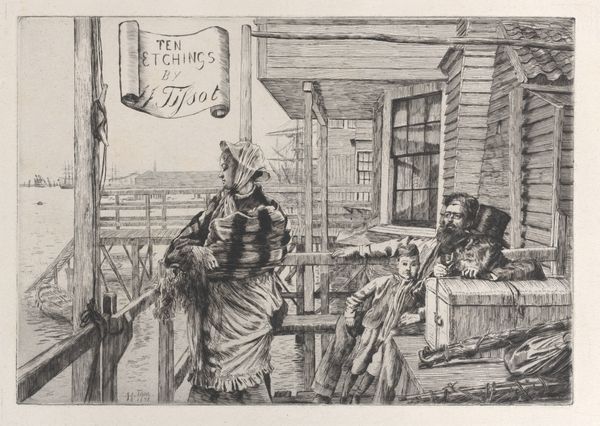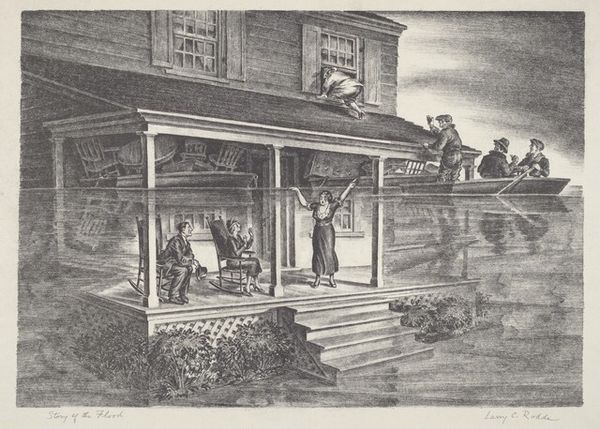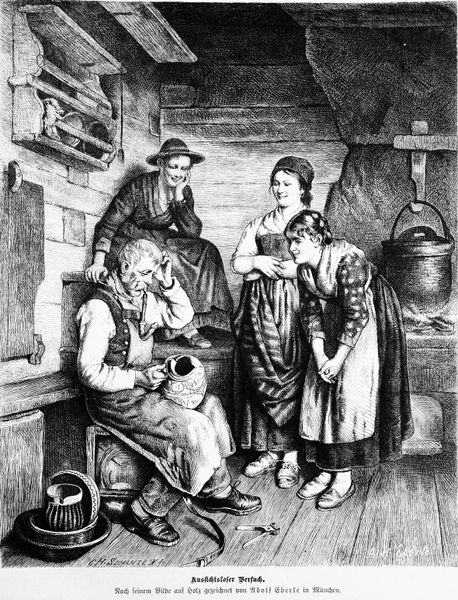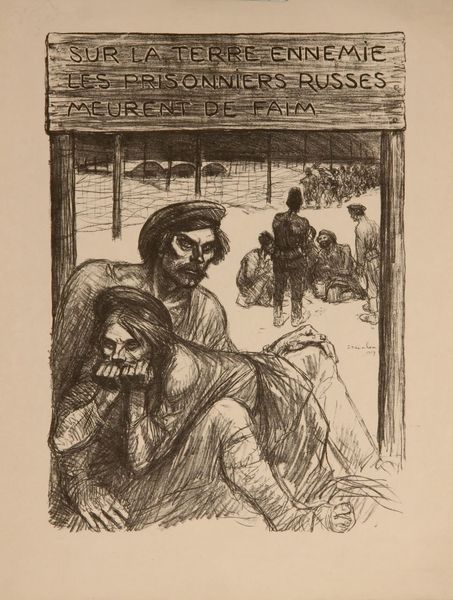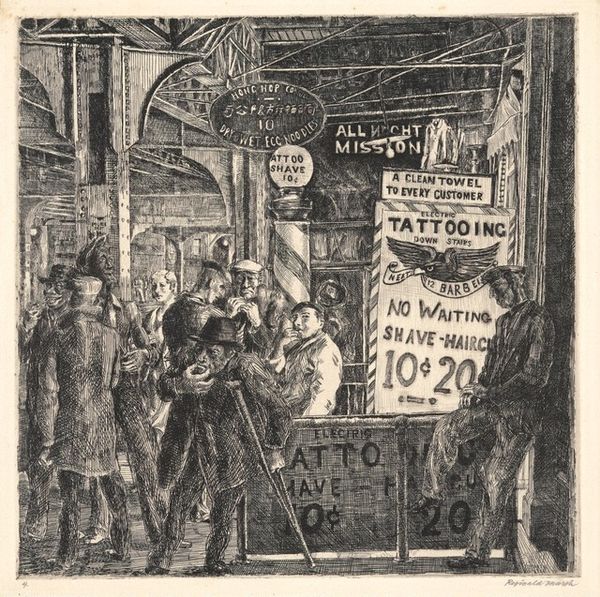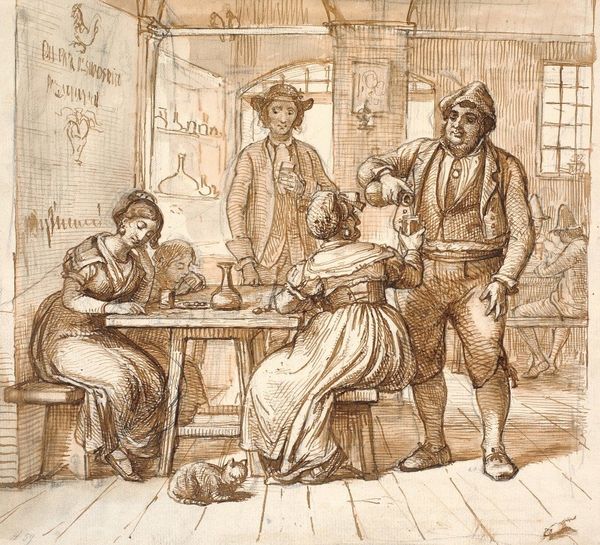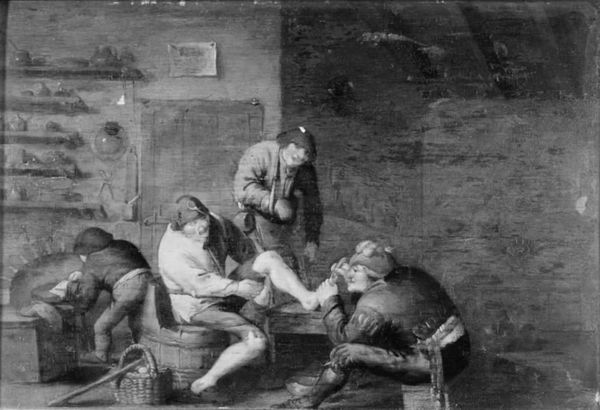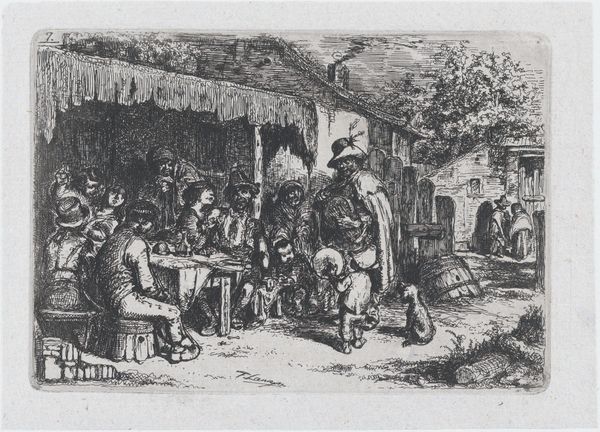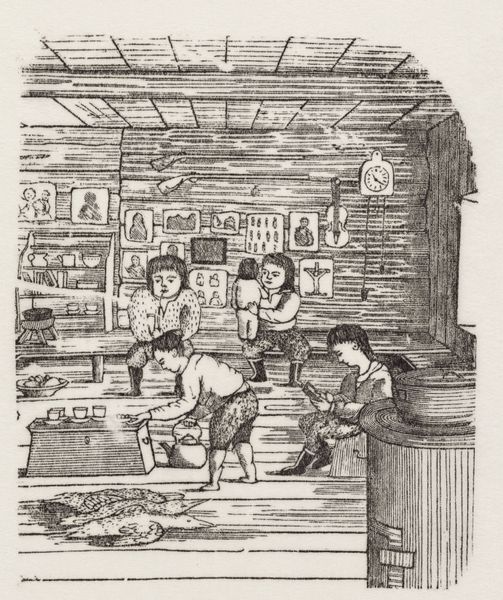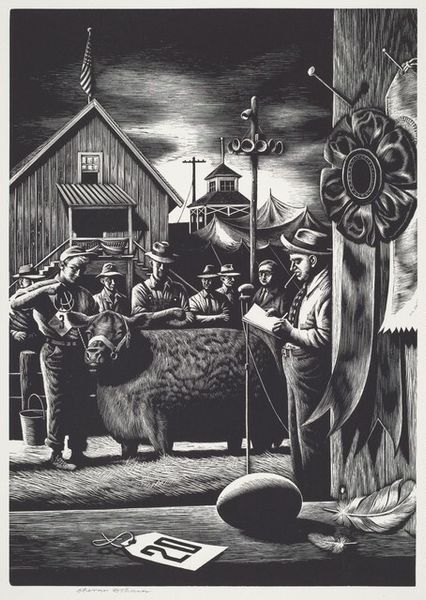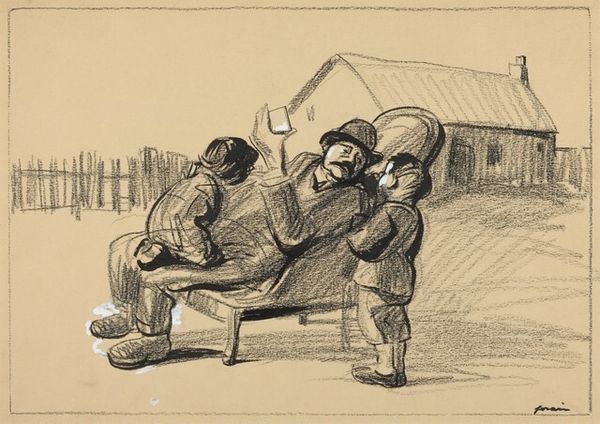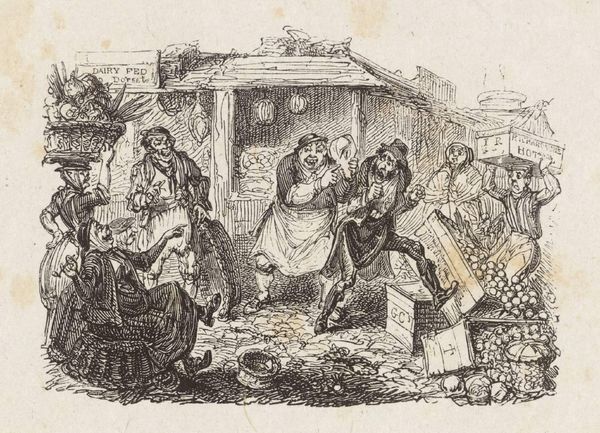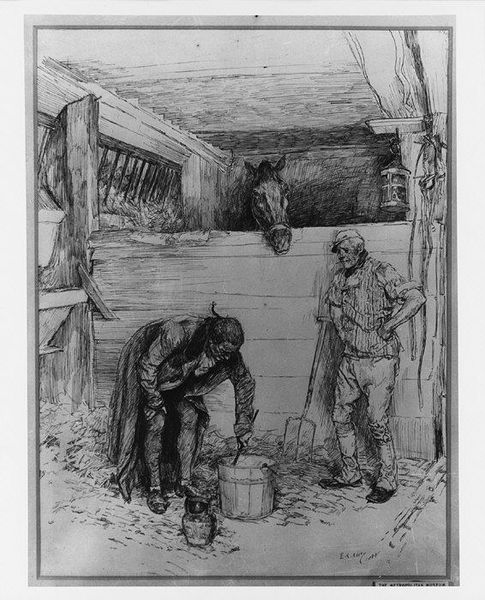
print, etching
#
portrait
#
16_19th-century
# print
#
impressionism
#
etching
#
cityscape
#
genre-painting
#
realism
Dimensions: 29.5 x 21.6 cm
Copyright: Public domain
James Tissot created "The Inn of the Three Ravens" using etching, a printmaking technique that relies on the controlled corrosion of metal. Tissot would have coated a metal plate with a waxy, acid-resistant substance, then scratched an image into this coating. When the plate was bathed in acid, the exposed lines would be eaten away. This process would be repeated as many times as needed, with the artist refining the image with each iteration. The plate could then be inked and printed, transferring the design to paper. The resulting print is characterized by fine lines and delicate tonal variations. The labor-intensive nature of etching means that the artist's hand is always present in the final image, even though the process allows for the creation of multiple copies. In Tissot's time, etching was seen as a way to make original art accessible to a wider audience, challenging the traditional hierarchy between unique paintings and mass-produced prints. Understanding how the image was made is key to appreciating how it functions as a cultural object.
Comments
No comments
Be the first to comment and join the conversation on the ultimate creative platform.
